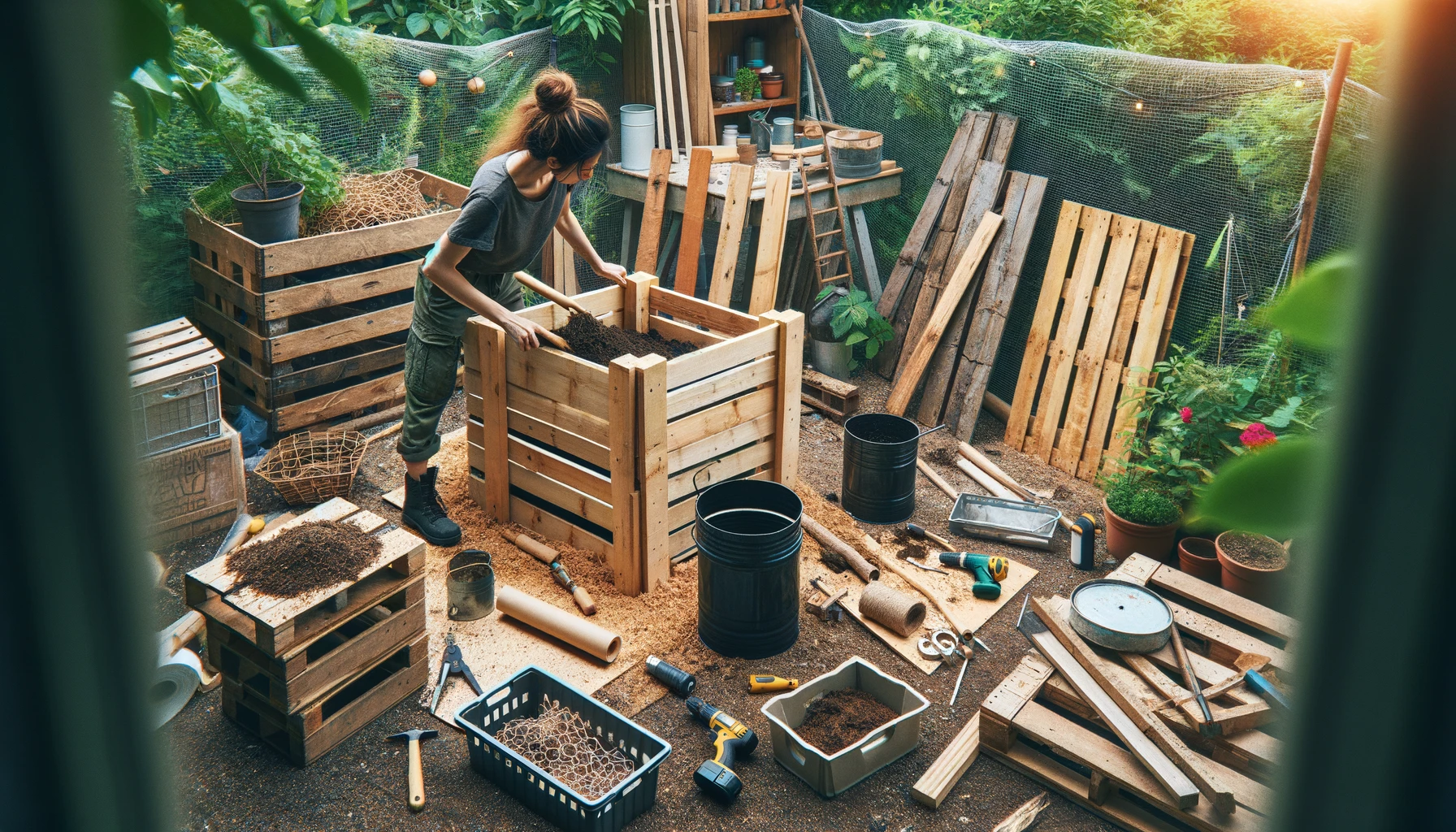Embarking on the journey of building your own compost bin is not just a DIY project; it’s a step towards fostering a more sustainable and environmentally-conscious lifestyle. By repurposing organic waste into nutrient-rich fertilizer for your garden, you not only reduce kitchen waste but also enrich your soil and support plant growth. Here’s a step-by-step guide to constructing a simple yet effective compost bin right in your backyard.
Materials You’ll Need
Before you start building, gather the following materials:
- Wooden pallets or lumber: Choose sturdy materials to form the structure of your compost bin.
- Chicken wire or mesh (optional, for ventilation): Essential for allowing air circulation within the compost pile.
- Hinges and latch: For constructing a lid or door for easy access to your compost.
- Screws and nails: Necessary for securing the components of your compost bin.
- Drill and saw: For cutting and assembling the wooden components.
- Hammer: For driving nails and making adjustments.
- Wire cutters (if using chicken wire): For cutting and shaping the wire mesh.
- Shovel: Essential for turning and mixing the compost pile.
Choosing a Location
Select a suitable spot in your garden for your compost bin. Opt for an area that’s easily accessible but away from direct sunlight and strong winds. Additionally, ensure there’s a nearby water source for convenience.
Building the Frame
If using wooden pallets, arrange them to form three or four sides of a box. Secure the corners using screws or nails to create a sturdy structure. If using lumber, cut the wood to the desired size and construct a box frame using screws or nails.
Adding Ventilation
Attach chicken wire or mesh to the sides of the compost bin to provide adequate ventilation. This step is crucial for promoting air circulation within the compost pile, facilitating the decomposition process. Make sure there are no gaps that pests can enter through.
Creating a Lid or Door
Construct a lid or door for your compost bin to allow easy access to the compost pile. Attach the lid or door using hinges and a latch for secure closure. The lid helps retain moisture and heat within the compost pile, speeding up the decomposition process.
Starting Your Compost
Begin by layering green materials (such as kitchen scraps and grass clippings) and brown materials (such as dry leaves and straw) in your compost bin. Aim for a balanced ratio of greens to browns to facilitate decomposition. Regularly turn the compost pile using a shovel to aerate it and promote decomposition. This helps ensure even decomposition and prevents the compost from becoming compacted.
Maintaining Your Compost Bin
Keep your compost moist but not soggy by watering it as needed. Monitor the moisture levels regularly and adjust accordingly. Check for adequate ventilation within the compost pile and make adjustments if necessary to ensure optimal decomposition. By following these steps and incorporating regular maintenance practices, you can build and maintain a successful compost bin right in your backyard. Not only will you reduce kitchen waste and enrich your garden soil, but you’ll also take a meaningful step towards living a more sustainable lifestyle.



